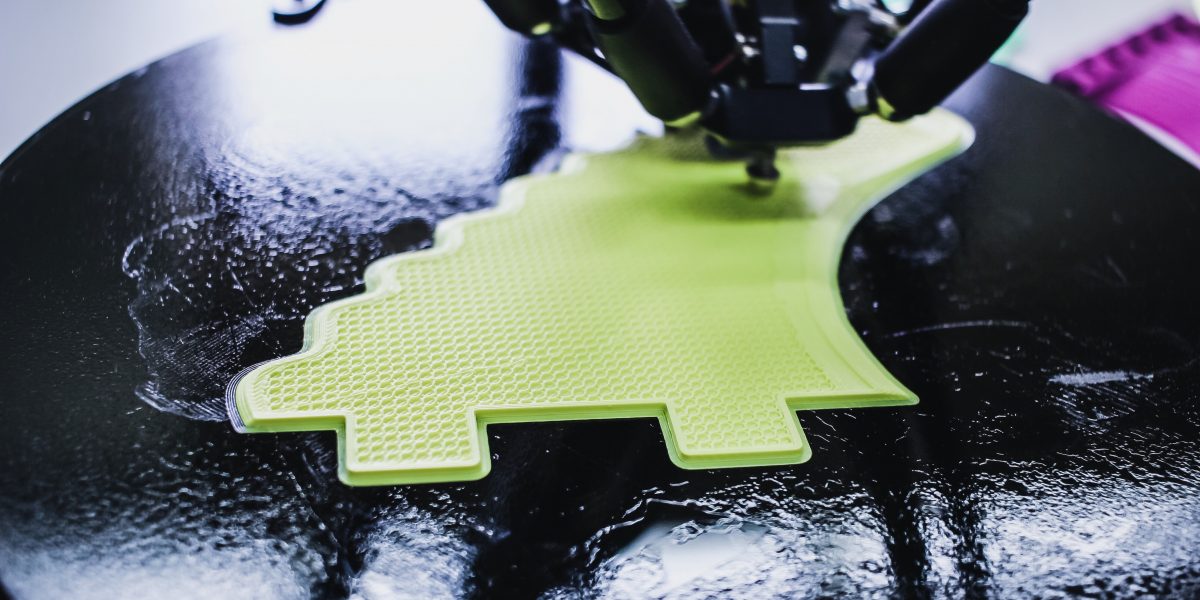Manufacturing
2020 Manufacturing Trends
2020 is in full swing, and trends in the fashion industry are beginning to emerge. Many manufacturers are anxious about what the rest of the year will bring. However, if manufacturers are aware of the upcoming trends, they can prepare accordingly. The following are some projections the industry is likely to see.
Prioritizing Sustainability
Most people don’t view the fashion industry as sustainable. With threats such as climate change, however, many consumers are looking for more earth-friendly options. They will want to stay away from brands that require excessive energy consumption, pollution, and waste. Fashion leaders need to change their ways to appeal to customers. Taking significant steps to reduce their carbon footprint, however, can turn into a powerful opportunity for advertising.
The younger generation leading the current earth-friendly movement has stated that they’re open to paying more for clothing that is safer for the environment. Many believe that sustainability is simultaneously one of the industry’s biggest challenges and opportunities.
New Materials
Fashion brands are also interested in creating sustainable fabrics that are safer for the environment than today’s harmful materials. Thanks to recently-developed fiber technology and new materials, there are a variety of opportunities. We can expect to see a strong emphasis on material innovation over the course of the year. In fact, sixty-seven percent of industry leaders believe that using sustainable materials is essential for their company’s future. Some companies have already begun creating alternatives to leather with pineapple leaf fibers.
Future Risks
Unfortunately, many fashion executives are feeling pessimistic about the future of the industry. The world is threatened by geopolitical instability and the risk of an upcoming recession. Every world event has a direct impact on the global economy and the entire fashion industry. To combat these risks, fashion leaders have to exercise caution by planning for risks ranging from trade tensions to new policies.
Fashion manufacturers need to stay on top of things by closely monitoring global events. They should also exercise operational flexibility and digitize all the equipment possible.
The upcoming year presents a variety of challenges to the fashion industry. Manufacturers, however, can stay ahead of the curve by keeping a careful eye on current events and becoming more sustainable than ever before.
Important Insights on Fast Fashion
Currently, some of the largest clothing retailers in the world are fast fashion chains. Brands like Zara, H&M, and Forever 21 are known for providing a huge variety of clothing in the latest fashions at incredibly low prices. Remember, if something like this sounds too good to be true, it probably is. Amid growing concerns about sustainability, slave labor, and other unethical business practices, fast fashion chains are finally starting to take a hit.
The rise of fast fashion first happened when the way people viewed fashion started to change. Thanks to the internet, fashion trends could be spread around the world almost instantly. The wealth of information generated by clothing blogs, social media websites, and other clothing chains made it easy for companies to analyze trends and have items move from the design stage to the retail stage in as little as five weeks.
As the trend cycle began to move quicker and quicker, consumers wanted more and more clothes. Companies quickly realized that instead of making items meant to last for years, they could make cheap items, drop their prices, and completely take over the market. Some retailers like Fashion Nova launch up to 900 new styles per week, at prices that are a fifth of how much clothing used to cost.
Since about 2000, fast fashion chains have seemed unstoppable. However, with Forever 21 declaring bankruptcy in late 2019, many fashion experts now believe that the industry has achieved a “tipping point.” The sudden downturn is mainly due to consumers becoming aware of the hidden costs behind fast fashion. One big issue is environmental concerns, with the production of polyester clothing being responsible for 706 million tons of greenhouse gases per year. Another significant issue is slave labor, with industry giants being found to use cotton produced by enslaved Muslim minority populations in China, clothing sewn by young children, and products produced in factories that refuse to pay living wages.
Consumers are starting to demand sustainably and ethically produced clothing. Many express that they are willing to pay more for garments that are well made and long-lasting. There is also a growing rise in the secondhand clothing market, as people search to find cheap clothing that does not compromise their morals.
How 3D Design Is Changing Clothing Production
Traditional clothing design is fairly well understood. Everyone has seen a show or movie where a designer sketches out a garment. This is the most traditional way of visualizing a piece of clothing before it’s made. Pattern-making, too, has long been paper-based. Cloth has traditionally been cut by hand. Typically, large fashion houses worked with muslins first in mocking up a garment. This meant that the first patterns could be tweaked with cheap material before using expensive, high-fashion fabrics.
Today, technology is changing every industry. Even artisanal trades like fashion and some kinds of construction have been affected. The biggest changes that are coming to the fashion world are courtesy of 3D tools. Computer-assisted design, or CAD, has long been a go-to in the worlds of architecture and interior design. 3D design has great applications for the fashion world. A lot of these will help the industry save costs and be more environmentally friendly going forward.
Many samples that are produced by hand never actually go into mass production. By making samples with software instead of needles and thread, fashion companies can get an idea of what works and what doesn’t before going into production. As it stands today, samples that aren’t produced are destroyed as waste materials. They are never given away or re-used. That means that some companies can destroy thousands of samples per year. Often, they’re made from materials that don’t readily decompose, like polyesters. 3D design keeps these items from landfills. It also helps companies save money on materials and labor.
3D design also simplifies the whole production process in an increasingly small world. Fashion houses in one country need to send specifications to factories in another. 3D design simplifies this process. The only thing that needs to move is one file, and these can be sent with technology like DropBox. In contrast to sending samples and patterns by mail, this saves a great deal of time. The computer files of 3D designs allow everyone involved in the design process to have the image right in front of them. Everyone, then, is on the same page. This type of thinking is going mainstream, with globally recognized brands like Marks & Spencer adding 3D design to their arsenal of tools.
3 Tips To Improve Your Manufacturing Process
As a business person, you’re keenly aware of how every step of the process impacts your business’ long term health. If there are any areas where you can maximize profits, you want to be capitalizing on that. One area that can often be analyzed in an effort to increase productivity and efficiency in manufacturing. Here’s a quick look at ways you can improve your existing manufacturing process in order to improve your business.
Cut Out The Clutter
It may sound overly simplistic, but taking a look at your manufacturing area is a great first step in improving efficiency. If the area is overrun with clutter, it will quickly lead to chaos. There is a direct correlation between mental stress and clutter among employees, and 75% of doctor visits are stress-related. Ensuring that your production area is neat an organized will empower your employees to maximize their time instead of stumbling around obstacles all over their work area, cut down on their stress which will lead to less work time missed. It’s also worth realizing that a cluttered environment is an unsafe environment; there is no need to put people in harm’s way when issues can be resolved with some good housekeeping.
Making A Profit from Your Loss
Any company’s profit and loss report (often called a P&L Statement) has a line on the sheet to reveal “waste.” That is the cost of the material that is leftover at the end of a production cycle or the cost of the items that were manufactured incorrectly. If you’re willing to think outside the box you can often find other companies that are willing to pay a small amount for what you have leftover. They can then use those items in their own production. You may not get the full price out of them, but any liquidation is better than having a total loss.
Cutting Utility Costs
You probably don’t leave every light in your house on and every faucet pouring water full blast around the clock. In the same vein, look for energy-efficient alternatives in your manufacturing process, and don’t forget to turn off pieces of equipment that aren’t in use. Every dollar counts!
Increasing efficiency in manufacturing is a crucial step in stabilizing the long term health of your company.





